A Project Journey: From Concept to Creation
- By
- April 27, 2020
- Agency
At RBA, we’re proud to create thoughtful, creative, and effective marketing and branding for our clients. Effective marketing doesn’t happen accidentally or randomly – it takes research, planning, strategy, creative, and consistent execution of the plan to get results for our clients. While client needs differ, and no two projects are alike, we’ve come up with a tried-and-true process that we follow to take any project from concept to completion.

All projects begin with discovery. This starts with a kickoff meeting with the client. We ask a series of questions to get more information on the project background, the stakeholders ,customers and the project objective, identify potential obstacles, and firmly establish our client’s goals.
From there, we do any additional research needed to get a better picture of the project background. We establish our target audience, and we see what current trends are in the market to make sure our message is timely and appropriate. We also identify any potential issues / challenges we may face in reaching the client’s goals. When appropriate, we identify relevant data and establish a baseline for our starting point. We then collaborate creatively as a team to determine the best path for success to accomplish our client’s goals.
We consolidate this information in a Creative Brief, which guides the creative process moving forward. By the end of the discovery process, we have identified what the objective of the project is, what success looks like, how we’re going to measure it, and any issues we are likely to encounter along the way.

Once we have a clearly defined strategy, we first develop concepts that we feel will deliver on the objective, then we work on our tactics. We want to make sure our solution is timely, unique, and creative so our client’s voice is heard above others. Using the information we uncovered in the discovery phase, we craft different concepts for each deliverable and let the client select one before rolling forward with creation. This step helps to clearly communicate the creative vision with the client before resources are spent executing on that vision.

Once a concept is approved, we move into execution. This step varies the most based on client goals and project scope, but always follows the same basic structure. We break the execution into manageable milestones and seek feedback and input from the client at each milestone. When appropriate, this is an agile process. This means frequent submissions of different project elements for the client to review and an open channel of communication every step of the way.

We defined what success looks like in the Discovery phase. Now is the time to compare our work with these metrics to see how they hold up, and refine our work until it meets or exceeds our goals. In most projects, we’re doing this in tandem with the creation phase. At each milestone, we’re comparing our creation with the goals set out in the Creative Brief and aligning our efforts accordingly. We’re submitting versions and drafts to the client and seeking feedback. For Social Media, we’re also doing A/B testing of our creative to our client’s target audiences or stakeholders. We take this input and use it to refine our work until it meets or exceeds our client’s goals.

Although this is the natural end of the project process, we prefer to continue building relationships with our clients. Working with a client for the long term not only allows us to get to know them better as a brand, but it helps us understand better what their goals are one, five, or ten years down the line. This results in more effective and creative methods for accomplishing our client goals.
Our proven process helps us live out one of our most important core values: Get Sh*t Done! Staying organized, identifying project milestones, and establishing clear cut goals helps to keep the project on moving forward.





